7 Days in Slovenia: Eastern Europe’s Magical Getaway
- evesymington
- Jul 28
- 27 min read
Updated: Jul 29
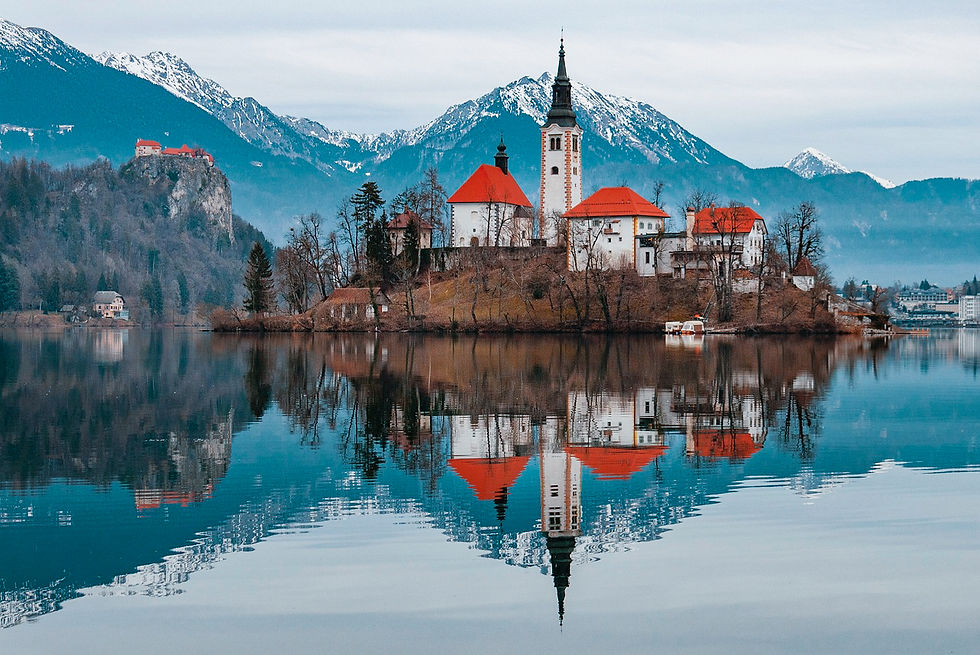
Slovenia is a tranquil, charming, quietly cosmopolitan country that’ll feel like an oasis in a very popular corner of Europe.
As with most great stops, we ended up there kind of by accident. We had just finished a wonderful but very crowded visit to Venice, Italy and were planning to head to Croatia, when I learned that there’s a super easy shuttle from the Venice airport right to Ljubljana. We didn’t have a set itinerary, so why not! We were soon delighted by the unexpected country, which has cobblestoney cafés in Ljubljana, an epic cave system, many water features, and a low-key excellent wine culture.
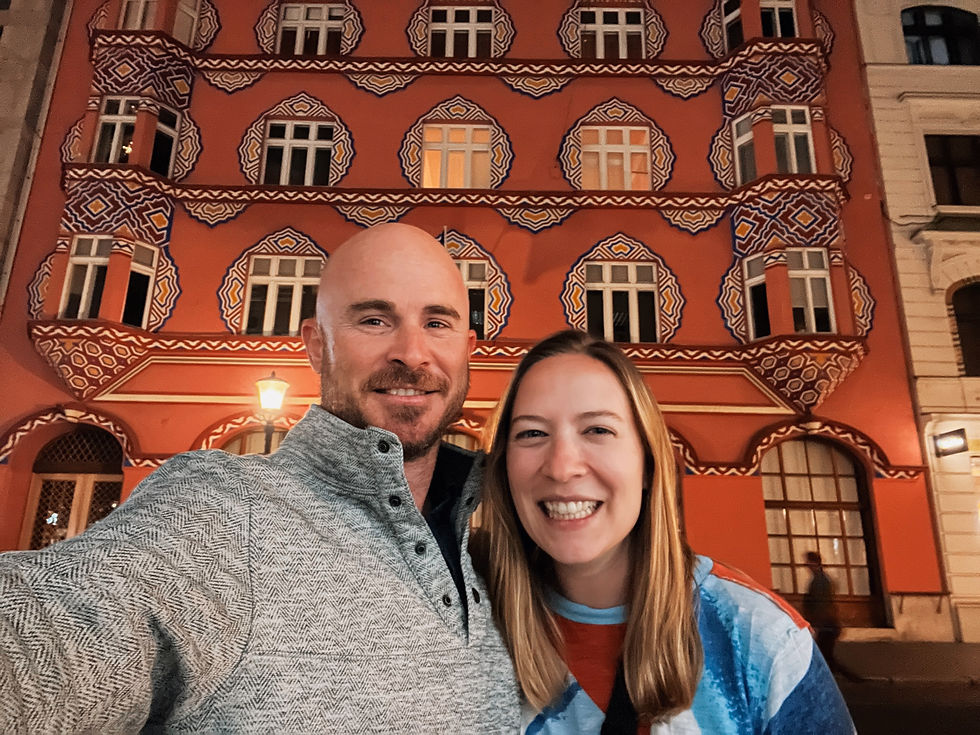
With far fewer tourists than its neighbors (looking at you, Croatia and Italy), Slovenia has a unique mix of Balkan, Germanic, and Italian culture. Check out our Essential Guide to Slovenia for a full overview of the country’s history, language, and more!
We have an excellent 7-Days in Slovenia itinerary here, which can be extended if you want to stay overnight in the Julian Alps or explore more corners of the country. If you’re just passing through, check out our Flash Trip: 3 Delightful Days in Ljubljana and Lake Bled!
If you’re traveling with kids, we also have mega-guides on kid travel (everything from flight hacks to jet lag to our favorite travel gear).
7 Days in Slovenia Itinerary Quick Peek
Jump To:
When to Go to Slovenia
For a full breakdown of Slovenia’s seasons, see our Essential Guide. But the TL;DR is that there’s no bad time to visit Slovenia. You can expect the usual warmer weather and bigger crowds in the summer, and for the country to slow way down in the winter – except if you visit a ski area.
Arriving in Ljubljana and Getting Around Slovenia
By Plane:
You’ll arrive at the small, easy Ljubljana Airport (aka Brnik, aka Jože Pučnik), about 14 miles outside of the city. Hop on a shared shuttle for around €12/person, for a 30 minute ride into town (ask about door-to-door service). Taxis are expensive and not really worth it. Uber is also active in Ljubljana, though it’ll actually just connect you with a local taxi driver. Worth checking the prices if you have kiddos or a lot of stuff!

By Rental Car: If you’re traveling with kids or just like to have more control over your itinerary, we always recommend renting a car. If you arrive in Slovenia and rent a car just for your time in-country, it’s very straightforward – most of the rental agencies have lots at the airport and downtown. Slovenia has nice roads and an easy pace, so you’ll find driving around the country a breeze.
We recommend waiting until you’re getting ready to leave Ljubljana to rent your car, though, as much of the center of the city is car-free. If you would like to grab the car upon arrival, check with your hotel about parking. There are two central parking lots in Congress Square (underground) and near the National University Library (NUK II) where you’ll likely leave your car during your time in Ljubljana. There is some metered street parking downtown, indicated by painted blue lines. There’s also cheaper parking along the river south of downtown, south of the St. James bridge. Fill up gas on Tivolska Cesta, just west of the train station.
WS&T Travel Tip: You absolutely need a toll sticker to drive on Slovenia’s highways. The sticker is called a vinjeta (veen-YEH-tah), which you can pay for by the week (€15) or by the month (€30). If you rent a car in Slovenia, make sure it comes with the sticker. If you drive in from another country, purchase one right away at a gas station, post office, or market. You can also buy one as you approach the border, or you can buy one online here: If you don’t have one, you will get a big fine.
If you are interested in renting a car to travel between countries in the region, make sure that the rental car company will allow you to travel to the countries on your list. Generally, if you’re traveling between EU countries you should be fine. Make sure your vehicle has its registration card and proof of insurance, also potentially called a “cross border card.” See our Essential Guide for more on intercountry travel, and see T’s article for a breakdown of the impossibly vague International Driver’s License (and a good laugh).
By Bus: The bus station is a tiny building in the middle of a median in front of the train station. FYI for when you’re leaving town, there’s no real waiting area so you’ll kind of be chilling on the sidewalk, though there are vending machines inside. We recommend getting around the country by bus, as the travel times are usually faster than the train. In the case of Lake Bled, the bus has a much more convenient stop in town than the train. Book bus tickets online or in the kiosks inside the bus stations. Flixbus does its own thing, so you’ll need to book those tickets separately online. Flixbus does international destinations like Croatia and Austria too.
WS&T Travel Tip: If you're traveling with kids, navigating buses with a car seat can be tricky. Flixbuses are supposed to have seatbelts, and we've heard that parents have successfully used car seats onboard. You can always babywear: baby facing outward, with the seatbelt around you but not the baby is safest. Otherwise, it's a gamble whether other bus companies will have seatbelts; you can try asking at the station before you purchase tickets but make sure you have a plan B.
By Train: The train station is also right in the middle of town and has pretty easy connections to many major destinations in Europe and around Slovenia.
By Shared Shuttle Service: If you’re on a flexible schedule, check out a company called GoOpti, which offers rides in a shared minibus. Book through their website, and then the day before you’ll receive exact timing based on the needs of the other passengers. It can be a great, cheap way to get around.
Okay, let the itinerary begin!
Days 1-3: Ljubljana (3 Nights)
Welcome to Ljubljana!
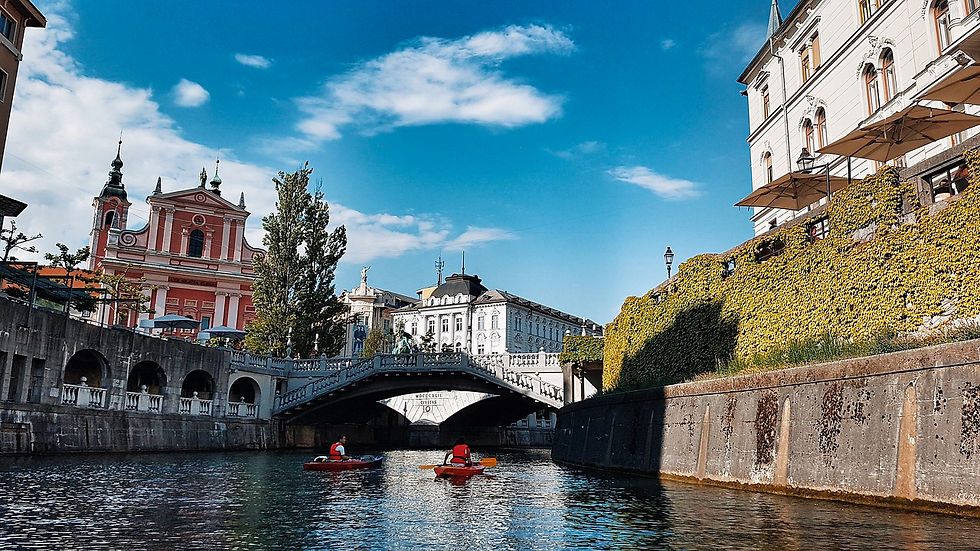
We were totally charmed by this lovely little city, which is very easily walkable. You can see all the major sights in a full day or a more leisurely day and a half, though we could easily have spent more time sitting in cafés or wandering the riverbank. It’s definitely a more relaxed pace of both tourism and life here compared to neighboring Italy, and you won’t see the same kind of grand buildings and bucket-list historic sights. But we really enjoyed everything we saw and did in Ljubljana!
WS&T Tip: Most museums are closed on Mondays, and the city slows way down on Sundays and in August in general.
Getting Around the City:
Ljubljana is super walkable, and we actually walked everywhere including to/from the bus station. Depending on your needs, you can also use Uber – which connects to local taxi drivers. Be aware that jumping in a taxi from the train station or other touristed area may lead to higher fares.
If you’re into biking, rent a bike from TI or register online for a city biking program called BicikeLJ. Super fun and easy!
Finally, Ljubljana has a fleet of little shuttles called Kavalirs which you can wave down and ride for free. Look for the cute green electric carts.
Where to Stay in Ljubljana:
The city is small enough that you can’t really go wrong, though you’ll likely be happier if you stay in a central location so it’s easy to walk everywhere.
Our Hotel Recommendations in Ljubljana:
Hotel Lev: Slightly outside the city center, this sleek, modern hotel has solid amenities (including a gym) and a nice breakfast buffet for a great price.
B&B Hotel Ljubljana Park: Clean, easy hotel with a pretty good breakfast, a short walk from the Dragon bridge.
Vander Urbani Resort: Splurge pick! Urban oasis nestled right on the riverfront, with a pool.
There are also many options that are more like little apartments for rent on both hotels.com and Airbnb.
Where to Eat in Ljubljana:
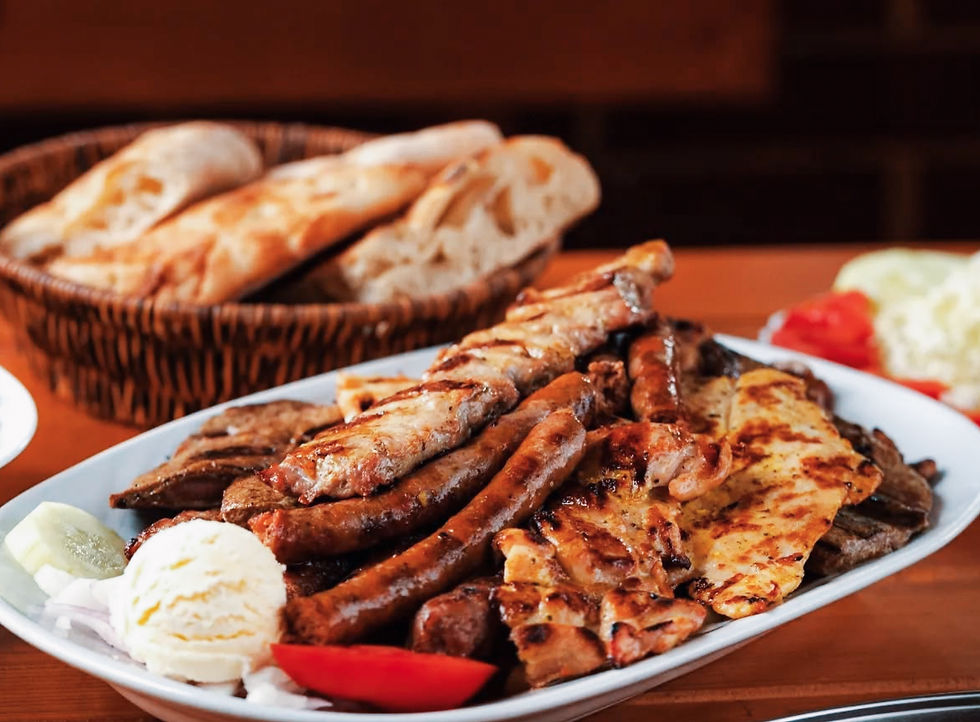
Baščaršija: This was our first stop in Slovenia, and we weren’t disappointed by the big mixed grill meat/pepper sauce situation. Delicious!
EK Bistro: Can’t-miss-it brunch spot.
Figovec: Delicious Slovenian spot favored by locals. You’ll want to take a happy nap after your meal.
Supernatural: For something completely different… we took a break from Balkan food for a great lunch at this central spot. We had huevos rancheros and pork spare ribs – go figure!
Gostilna na Gradu: White tablecloth Slovenian fare up at the castle; one of the more delicious local options you’ll find in town.
Along the graffitied street of Trubarjeva Cesta, you’ll find a range of budget options from pizza to Asian noodles. We found a Mediterranean spot with delicious falafels and went twice.

WS&T Healthy Options:
You can’t go wrong with a fresh picnic from the farmer’s market. Load up on veggies and fresh fruits to counteract the heavier Balkan stews and dumplings.
We also enjoyed a meal at Güjžina, which is a vegan Slovenian restaurant. Surprisingly yummy!
What to Do in Ljubljana: Day 1
As you begin your exploration of Ljubljana, you’ll find that everything is very walkable in this compact city. Make sure you spend at least one of your meal or break times along the river embankment between the Triple Bridge and the Cobbler Bridge, sipping on an espresso, glass of wine, or tucking into a Slovenian stew.
Start off your exploration of Ljubljana in Prešeren Square (aka Prešernov Trg), the heart of the small city. The square is named after Slovenia’s favorite poet (and author of the National Anthem), France Prešeren:
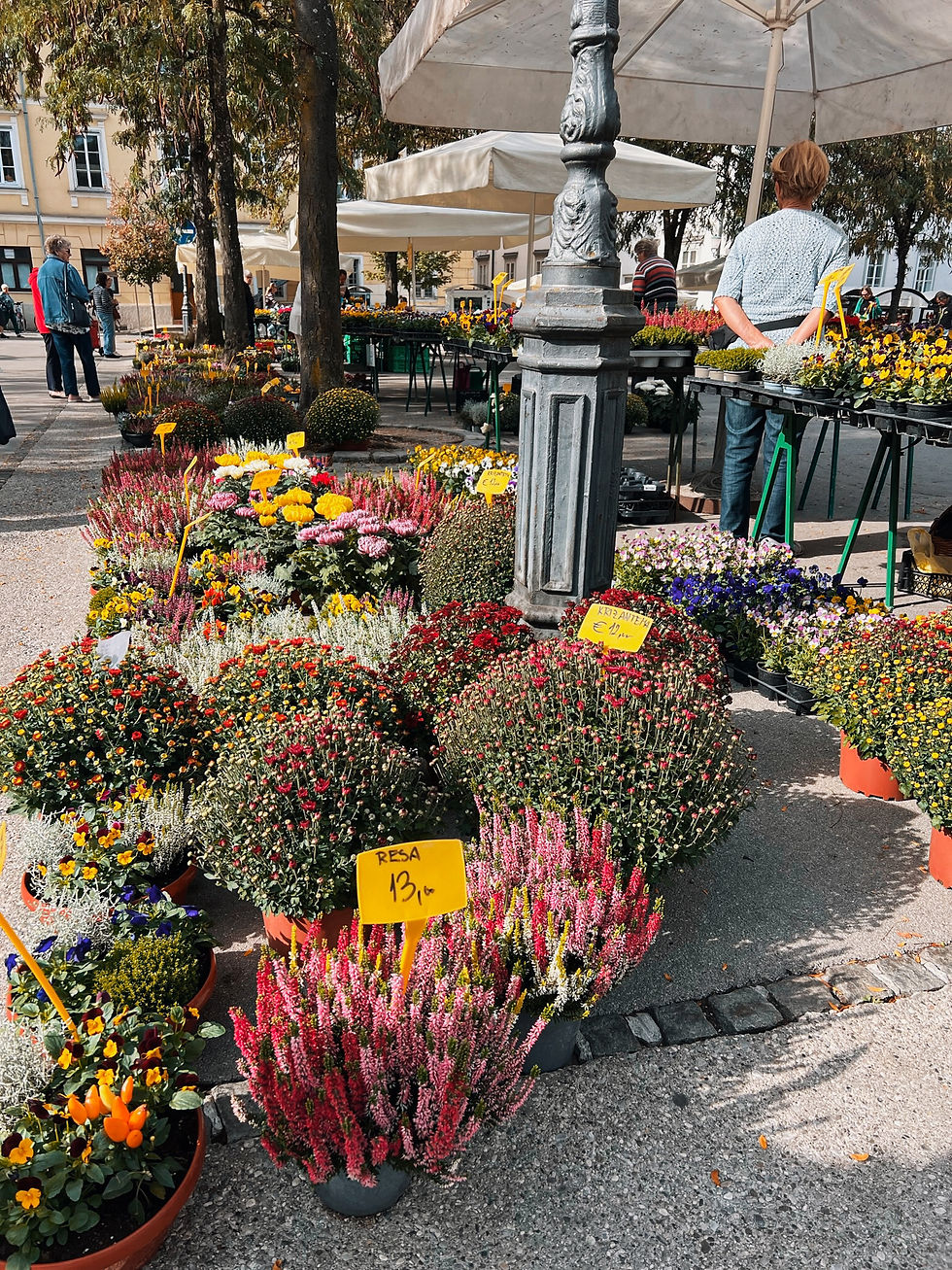
God’s blessing on all nations
Who long and work for that bright day
When o’er earth’s habitations
No war, no strife shall hold its sway
Who long to see
That all men free
No more shall foes, but neighbours be!
Directly in front of you, you’ll see Ljubljana’s famed Triple Bridge (Tromostovje; you’ll recognize the word “Most” – bridge – if you’ve traveled in other Eastern European countries), designed by Slovenia’s top architect and Ljubljana visionary, Jože Plečnik – more on him everywhere.
Just down the street, you’ll see the art deco Hauptmann House – sole survivor in this area of a big earthquake in 1985 – and a large scale-model of the city center. The glass awning’ed building is the Galerija Emporium, a high-end mall worth peeking in to see the grand staircase. Keep looking up as you wander down Miklošičeva Cesta – there’s architectural gems everywhere.
On the East side of the river, you’ll find the wonderful Riverside Market, an outdoor farmer’s market bringing together farmers and small vendors from around the country. We bought fruit, coffee, and oddly a whole head of Romanesco to munch on as we wandered about. You can find souvenirs along the riverside colonnade (another Plečnik design) as well as several cute restaurants.
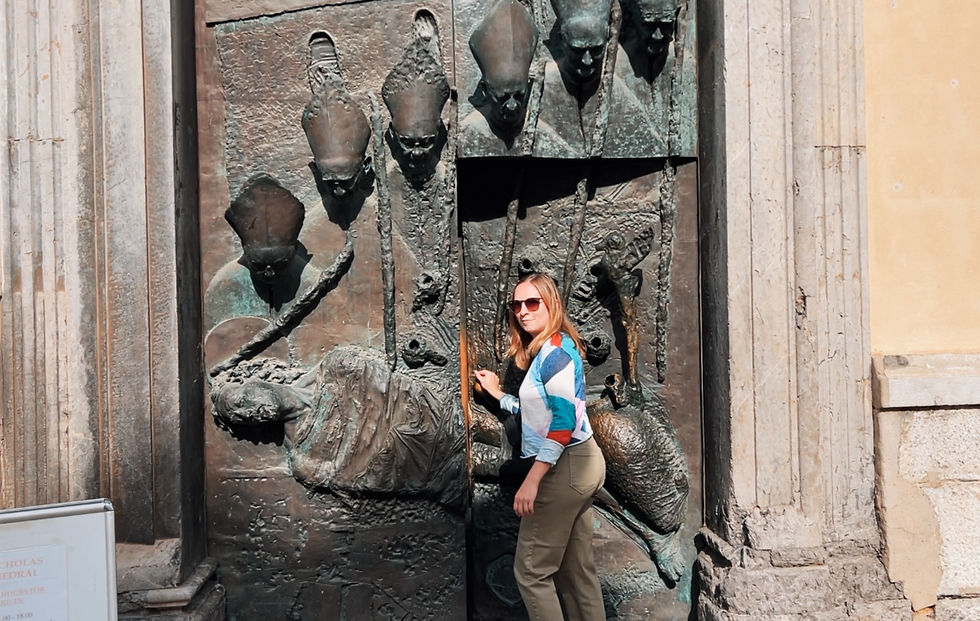
At the end of the souvenir stalls, you’ll find the Small Market Square, in which you’ll find the market hall, where the local food vending continues. Here you’ll also spot the St. Nicholas Cathedral, where you enter through a very eye-catching side door with a series of sculpted bishops. The exit takes you through the main bronze door, a true artistic accomplishment which tells Slovenia’s story in sculptural form. The cathedral has slightly odd hours, so if it’s not open, come back later!
Emerging at the opposite end of the square to the East, you’ll enter the Main Market Square and spot the iconic Dragon Bridge. Dragons have long been a totem of Ljubljana, and you can admire this Art Nouveau representation.
From the Main Market Square, you can take a funicular ride to the Ljubljana Castle for about €6 round trip. The funicular runs every 10 minutes while the castle is open, and takes a blink-and-you-miss it 60 seconds to reach its destination. The castle is a modern-ish replica of a much-iterated historical structure, and definitely one of the less interesting European castles we’ve seen. But there are great views and some interesting additional attractions up here, including the Slovenian History Exhibition, a “Virtual Castle” animated film, and the intriguing Museum of Puppetry.
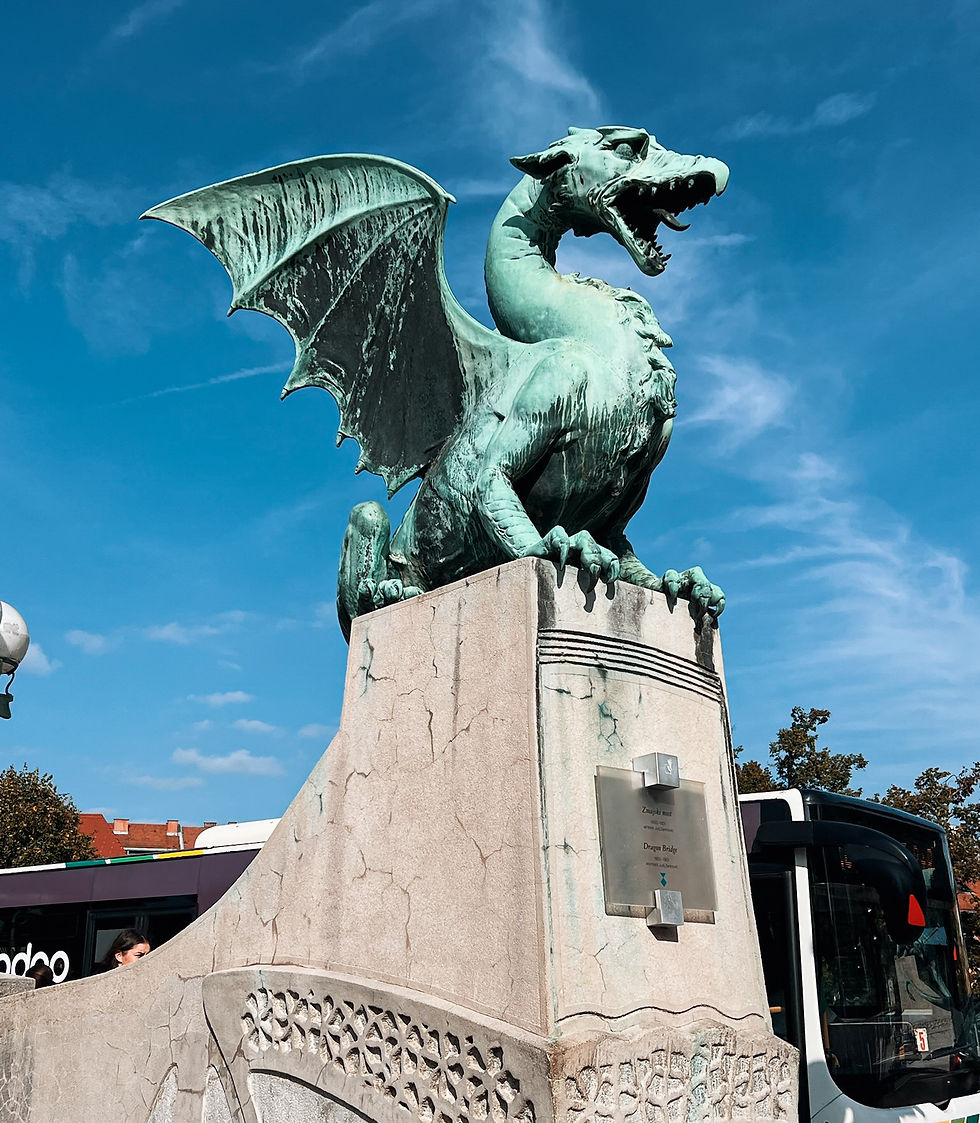
We recommend timing this excursion during lunchtime and dining on traditional Slovenian cuisine at the delicious Gostilna na Gradu.
Back down by the river, you’ll enter the pedestrian zone of Ljubljana’s Old Town. Check out the Fountain of the Three Carniolian Rivers in the Town Square, then window shop (or real-shop) along the delightful Mesti Trg Old Town Shopping area. You’ll find all kinds of traditional Slovenian products, from tea to salt to handicrafts.
Eventually you’ll reach Gornji Trg square, from where you can loop around and walk along the riverfront. Check out Plečnik designs: Cobblers’ Bridge, National and University Library, the Gradaščica River embankments and more. In the Auersperg Palace, you can dive deep into the history of the city at the City Museum of Ljubljana, which was quite well done.
A bit south of the city center (15 minutes on foot), you’ll find Jože Plečnik’s House, a perfectly-preserved historical gem where you can see where the city’s famed architect did all of his work. If the city’s architecture and style interest you, you may want to start with a visit here, which will help contextualize the city and give you extra insight for your wanderings.
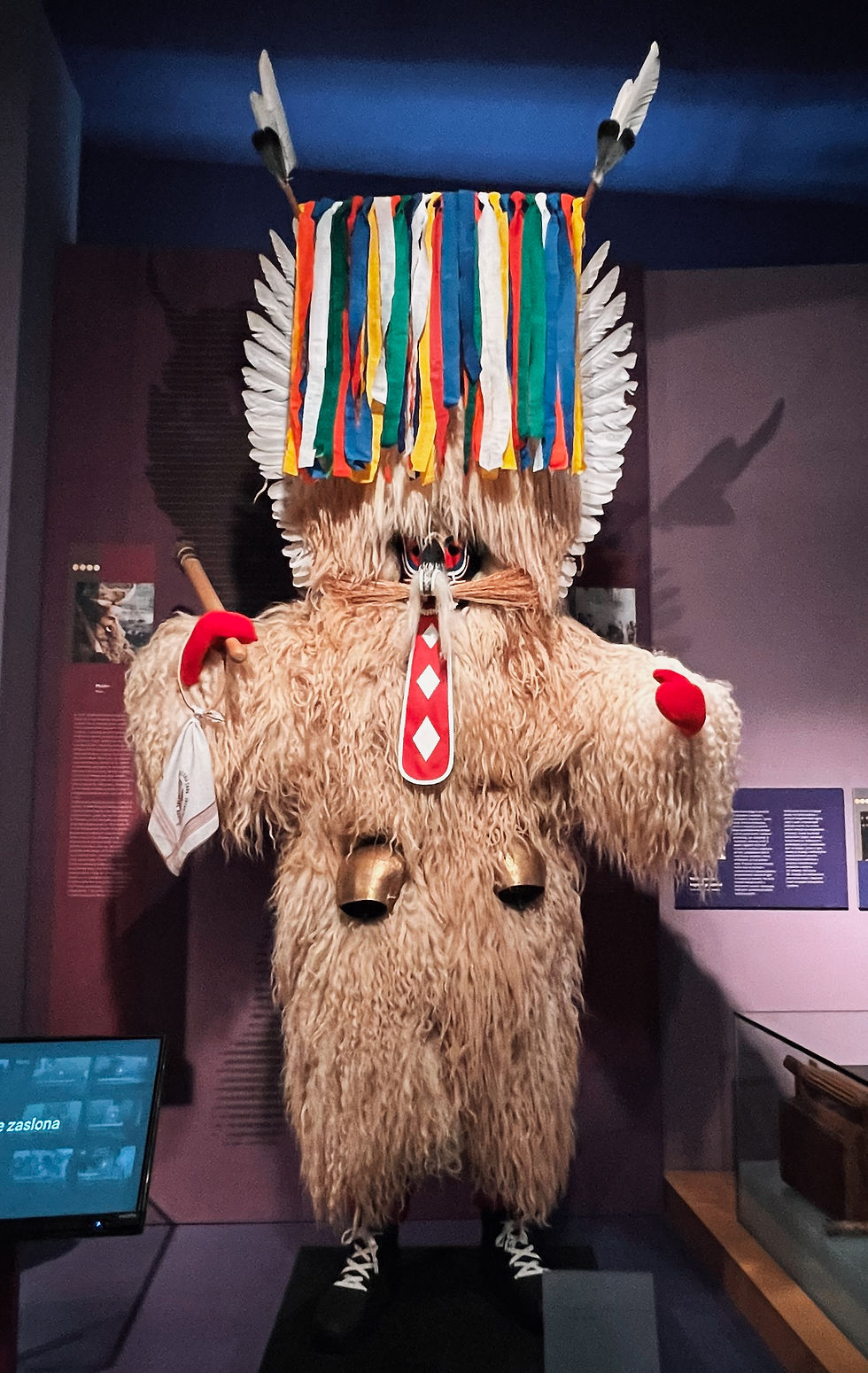
Slightly west of the city center (about 10 minutes on foot), you should definitely visit the Serbian Orthodox Church of Saints Cyril and Methodius. Amid the many, many Catholic and Protestant churches and structures in Europe, you don’t get to see too many Orthodox churches, and they are fascinating.
If you’re into art and/or history, you can also explore the Museum of Modern Art, the National Gallery, and the Contemporary History Museum. We decided to check out the Slovenian Ethnographic Museum, which was an unexpected treat, with great exhibits on Slovenian people, customs, and traditions.
Another fun stop is the Nebotičnik (Skyscraper), once the tallest building in Europe! It’s an Art Deco confection, and you can ride the elevator up for a free view. Keep an eye out for Roman ruins dotted around the city and be amazed at Ancient Rome’s reach!
Day 2: Day Trip to the Caves

Day 2 is dawning, and it’s time to take a day trip to one (or both!) of Slovenia’s famed caves: truly some of the most incredible cave systems in the world. Both are located in the Karst region, about an hour’s drive south of Ljubljana.
There are two main cave visits, which are each located about a 45-minute drive south of Ljubljana (though the journey on public transit takes longer). The caves are also about 25 minutes apart from each other.
You have a couple of options for your day trip:
1. Visit Škocjan Caves for a cave tour
2. Visit Postojna Caves for a cave tour
3. Visit both cave sites: this is only recommended if you have your own vehicle (or have booked a driver) as traveling between the sites on foot or with public transit is challenging
4. Tack on a non-cave side trip from either cave site. From Škocjan, you can visit Lipica and check out the Lipizzaner stallions, while nearby Postojna you’ll find the Predjama castle. Again, it’ll be much easier to add on one of these side trips if you have your own wheels.
5. Visit any combination of these sites on a guided day tour from Ljubljana. There are a bunch of companies providing such tours, so you can easily find a good option through a service like Viator or Get Your Guide. We’re not too into guided fun unless it’s unavoidable, so we decided to go on our own.
For this day trip, we wanted to try out the public transit option and were up for a more strenuous visit, so we took the bus to visit the Škocjan Caves only. We wish we could have seen both caving systems, but we had a great day.
So, Should You Visit the Škocjan Caves or the Postojna Caves?
Both are very impressive, so you really can’t go wrong, but they do offer slightly different experiences. Here are the main differences:
Škocjan Caves
UNESCO World Heritage Site with a colossal underground canyon
Less commercialized; dramatic and raw natural setting
Tour length: 2 hours
Walking: 1.5–2 km with stairs, inclines, and uneven paths
Difficulty: Moderate. Unlike Postojna, there is no train; this is a full walking tour. There is definitely some climbing required, though if you’re in decent shape it’s totally fine.
Cost: Around €24 for adults (discounts for kids, students, families)
Smaller groups
Postojna Caves
Slovenia’s most popular and developed cave system
Highly accessible with a mix of train ride and walking
Tour length: 1.5 hours
Walking: 1.5 km on foot, plus 3.7 km by underground electric train
Difficulty: Easy. Suitable for all ages, including young children and seniors
Cost: Around €29.50 for adults (combo tickets with Predjama Castle available)
Well-lit and designed for high visitor volume
Visiting Škocjan Caves:
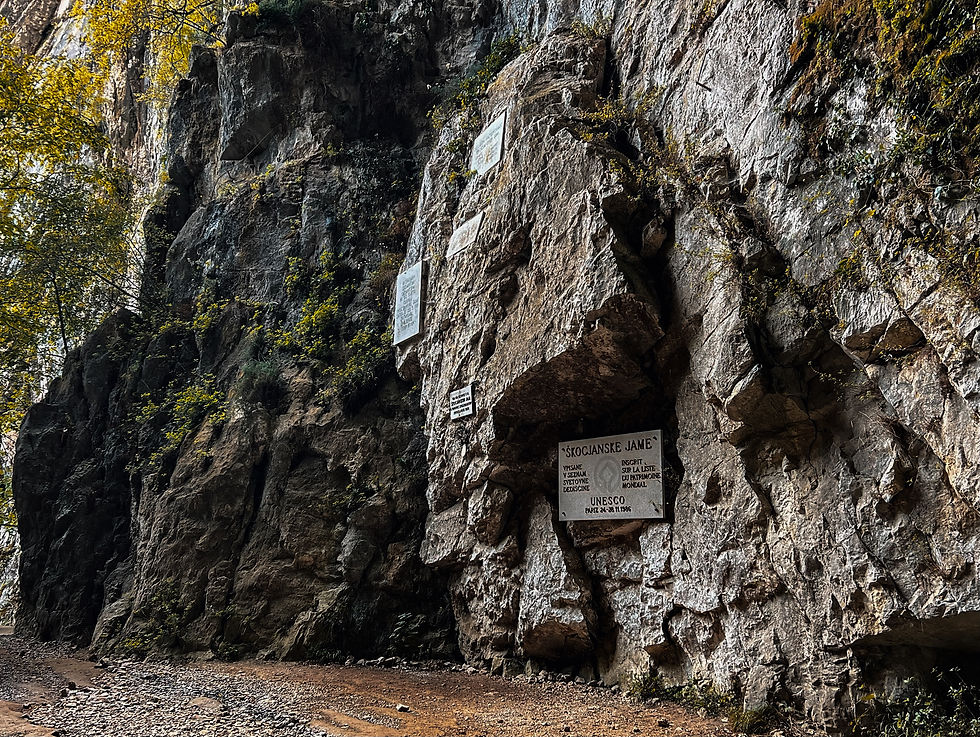
We were so impressed by the Škocjan Caves, which you visit with a moderately challenging walking tour which takes you through the impressive formations and over a raging underground river. It’s wild to think about the first explorers finding this cave system and deciding that yes, it was a great idea to descend into a completely dark, underground hole just for the thrill of it all.
After the tour, there was a cool little museum back in the visitor’s area depicting some of these early explorers and their gear. Then we decided to do a self-guided walk around the very Slovenian village surrounding the cave. From the cave gift shop, we got a walking map with certain sights marked along the route. We didn’t see anyone else along the way, and it was very picturesque and fun! T revealed that he has an incredible donkey call as he lured this donkey buddy across the field to say hi. Just when I thought I couldn’t love him any more…
Getting to Škocjan Caves:
If you are going on your own and not with a group tour, you have three options:
By Rental Car: Probably the easiest way to go, especially if you want to combine this visit with Postojna, Lipica, or the Predjama Castle. See above for info about renting a car in Ljubljana.
By Bus or Train:
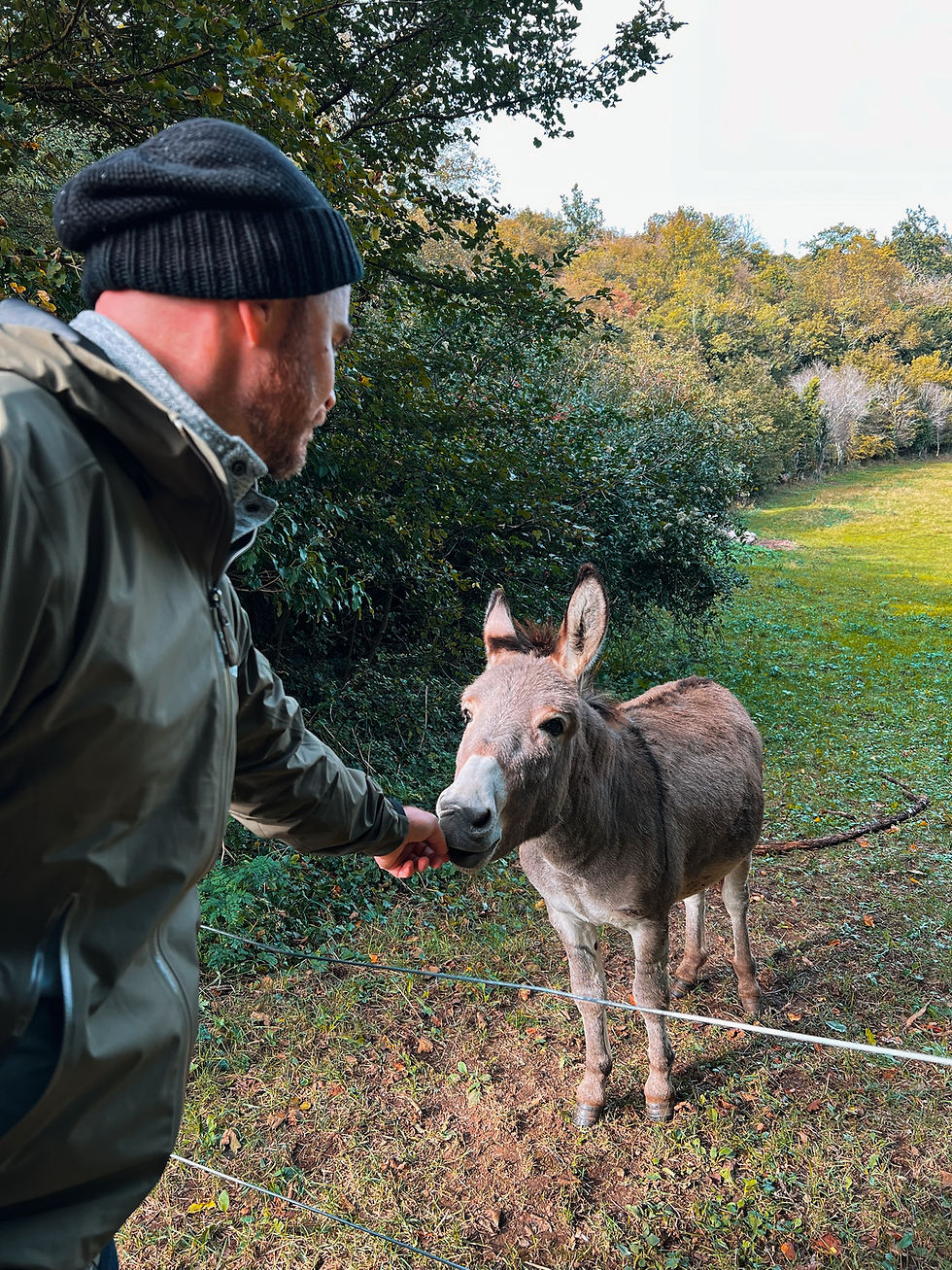
From Ljubljana’s central bus station or next-door train station, grab a bus or train to Divača. The buses run approximately every 2-3 hours, and the ride is 1.5 hours. We made an easy online booking here. When you arrive at the Divača station, your next step will depend on the time of year. From May to October, they run 5 free shuttle buses per day from the train station – ask about this at the train station. If you’re outside of those months, there are no shuttles. We opted to walk (we were feeling very energetic that day), which took about 40 mins. Otherwise you can apparently call a local taxi and we heard about the ToyotaGO option, kind of like Uber.
For the return trip, we’d looked up the bus schedule and had purchased a round trip, so we just went back to the spot where we were dropped off originally. There wasn’t much in the way of signage and we were really wondering what we were doing in the middle of nowhere in Slovenia for a second… but the bus showed up and all was well.
Overall, we were ready to spend the whole day and a lot of walking on this experience and we had an awesome time. But if this sounds like a pain, we recommend either doing Postojna or renting a car.
Škocjan Cave Tour Details:
· €16-24 for the tour, depending on time of year
· The tours depart every hour during peak season, and a little less frequently off-season. Check online for details and to pre-book.
· Bathrooms by the ticket office but none underground
· Lockers at ticket office
· There’s a simple but pretty good café
Additional Visit from Škocjan: the Lipica Stud Farm (Kobilarna Lipica)
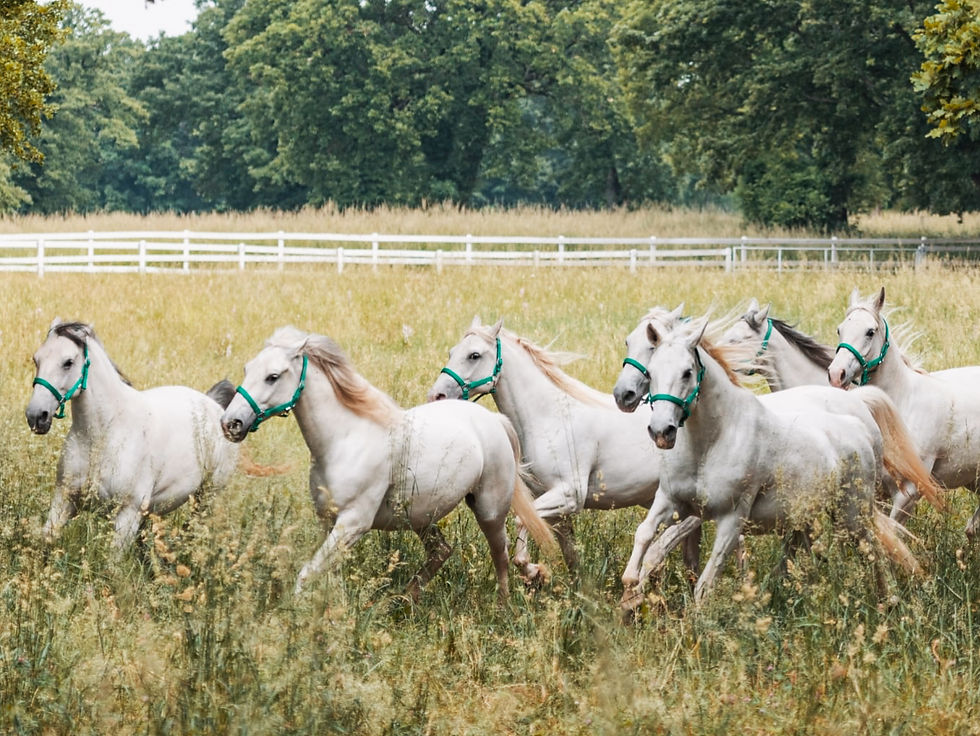
About a 10-minute drive from the Škocjan Caves is the Lipica Stud Farm, where you can meet the famed Lipizzaner horses in a small, up-close environment. You’ll be able to go on a tour of the farm, watch a training session, and visit a very nice little museum. On some days, you’ll get a real treat: the stallions will perform their intricate prancing maneuvers.
Visiting Postojna Caves:
The Postojna Caves are super impressive and I’m sure you’ll hear about the famed underground train that runs through part of the caving system. It’s also a lot more crowded, and more of a contained experience than Škocjan. If you have any mobility concerns, have small kids, or just want a more tourist-friendly experience, this is the spot! You really won’t be disappointed by either caving system.
Getting to Postojna Caves:
Rental Car is an easy 45-minute drive, and will provide a no-stress way to combine this with any of the other nearby sights. There is paid parking about a third of a mile away from the main entrance (look for the big tour buses).
By Bus (train is possible but less convenient):

There are about three buses per day from the central Ljubljana bus station which take you directly to the caves.
Postojna Cave Tour Details:
· €29 for the tour, or €41 for a combo ticket with the castle (including a shuttle between the two sites, which runs only during the summer months)
· The tours depart every hour or half hour during peak season, and a little less frequently off-season. Check online for details and to pre-book.
Additional Visit from Postojna: Predjama Castle (Predjamski Grad):
About 10-15 minutes’ worth of windy road away from Postojna, you’ll find the very scenic Predjama Castle essentially mounted in a cave. The exterior is free to view, and you’ll pay about €18 to go inside. There’s not much to see inside, but you’ve come all this way…
Make sure you learn the local legend of the castle!
After all this touring, you’ll finally make your way back to cozy Ljubljana, which is probably starting to feel like home – even after a day. Grab drinks or dinner along the riverside and people-watch until it’s time to sleep!
Day 3: Travel to Lake Bled

The next day, grab some coffee and breakfast at EK Bistro or Oakberry, then head to the bus station (or your rental car) to begin the journey to Lake Bled. Make sure that if you’re doing this trip during the peak summer tourist season, you book ahead to avoid major price hikes. We were traveling in late September and had no problem booking cheaper accommodations last minute, but things really book up in the summer.
Lake Bled is an accessible yet romantic alpine resort town, which is both very popular and very laid-back. The pace is slow, the views are lovely, and the best thing to do is wander around the lake.
Getting from Ljubljana to Lake Bled
If you’re going by car, you’ll have an easy 45-minute drive: no muss, no fuss.
If you’re going by bus, grab a cheap ticket here. Buses run approximately every hour, and the

journey will take you less than 90 minutes. You’ll arrive right in the center of the little town of Bled, so you’ll most likely be able to walk to your hotel.
In the town of Bled, you’ll find the twisty streets of a small village, and a commercial center with a grocery store, ATM, and a bunch of big hotels. You’ll never be far from Lake Bled itself, which is the town’s main attraction.
Where to Stay in Lake Bled:
The area is so small that you can’t really go wrong; check the walk time from the hotel to the lake and to Bled town to see how central it is.
There are quite a few “pensions” – cute B&B-type places to stay – and you’ll save some money by booking directly. Closer to the Old Town, you can try Apartments Brunko Bled. We had good luck booking an apartment-like room through Airbnb.
Where to Eat in Lake Bled:
We didn’t have any issues eating at these restaurants last-minute in late September, but we’ve heard that you’ll need reservations pretty much everywhere at the height of tourist summer.
Art Bar: While we heard this is a lovely spot to get an evening drink, we actually came here for breakfast both mornings we were here. The omelets were delish!
The Old Cellar: We really enjoyed our meal at this homey-yet-upscale spot with modern takes on Slovenian classics. We especially liked the “porcini cappuccino.”
Restaurant & Wine Bar Murka: Another nice Slovenian choice, this one with more Italian influences.
Oštarija Peglez'n: Big skillets to share at this Slovenian/Mediterranean spot.
What to Do in Lake Bled:
Duh, see the lake!
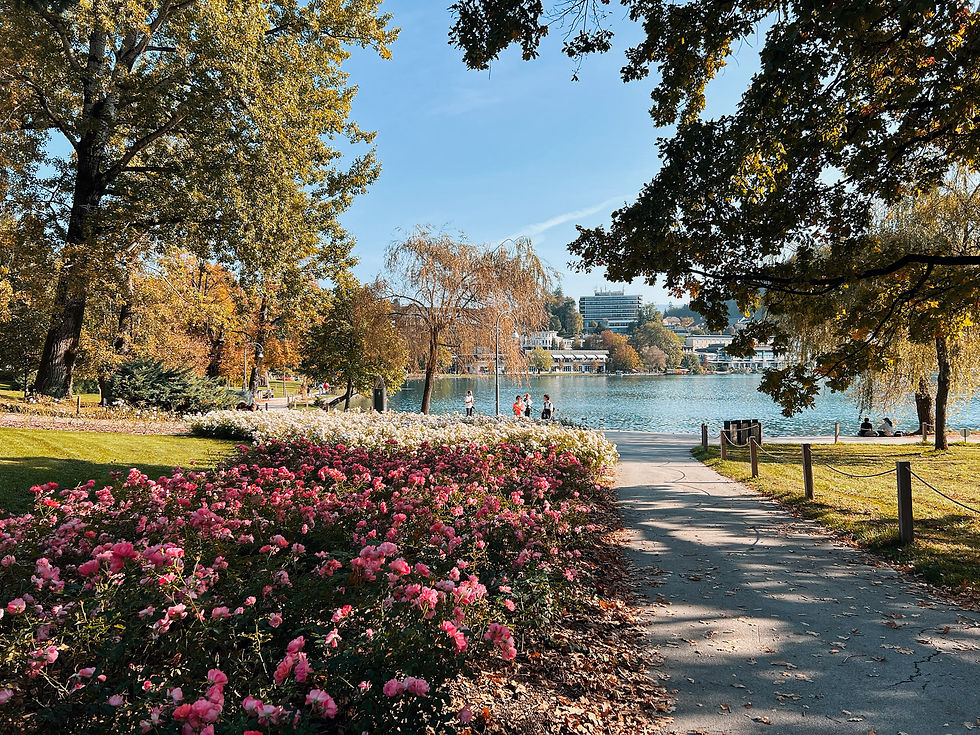
No but really, the lake is the main attraction and has a whole host of fun activities for your first day in town. We ended up doing the full lake walk every day we were there, just because we liked it so much.
Lake Walk: Stroll the 6 kilometer perimeter of the lake and enjoy the many serene views and local swans. Make sure you head all the way down to the lakefront before beginning your walk, as there is a path further uphill.
You can visit the island in the middle of the lake via one of Bled’s iconic pletna boats. Rent one in front of the Grand Hotel Toplice or at various other spots around the lake. €15/person round trip for a 25-minute journey and about 30 minutes to visit the island. Once there, you can wander for free, grab a Slovenian nut cake at the Potičnica café, and pay €12 to visit the island’s church. Note that last time we were there, there were no life jackets available so we recommend skipping if you have a little one who can’t swim yet.
If you’d like a little exercise, rent a rowboat or stand-up paddleboard at various spots, including Pension Pletna in Milno. You can also go for a swim by the swimming pool complex. If you want a bit of thrill (during summer months only) try the Luge ride on Mount Straža!
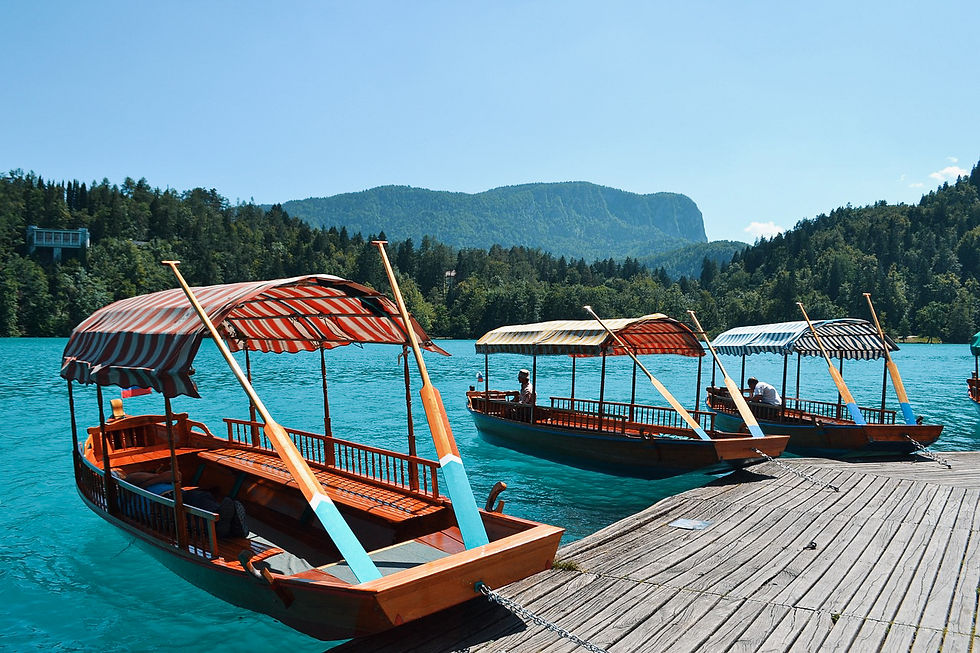
Bled Castle: Fairly strenuous 20-minute climb from the lakefront, or you can drive up. This isn’t the most awe-inspiring castle you’ll see in Eastern Europe, but it was interesting, with some fun exhibits. The best thing about the castle is the gorgeous views of the lake.
After you’ve had your fill of lake activities, make sure you treat yourself to Lake Bled’s signature cream cake (Blejska kremšnita or kremna rezina), sold at many bakeries around town.
After dinner, grab a glass of Slovenian wine at the Vinoteka Zdravljica or a pint-and-a-football-match at Bled Pub or Devil.
Day 4: Vintgar Gorge
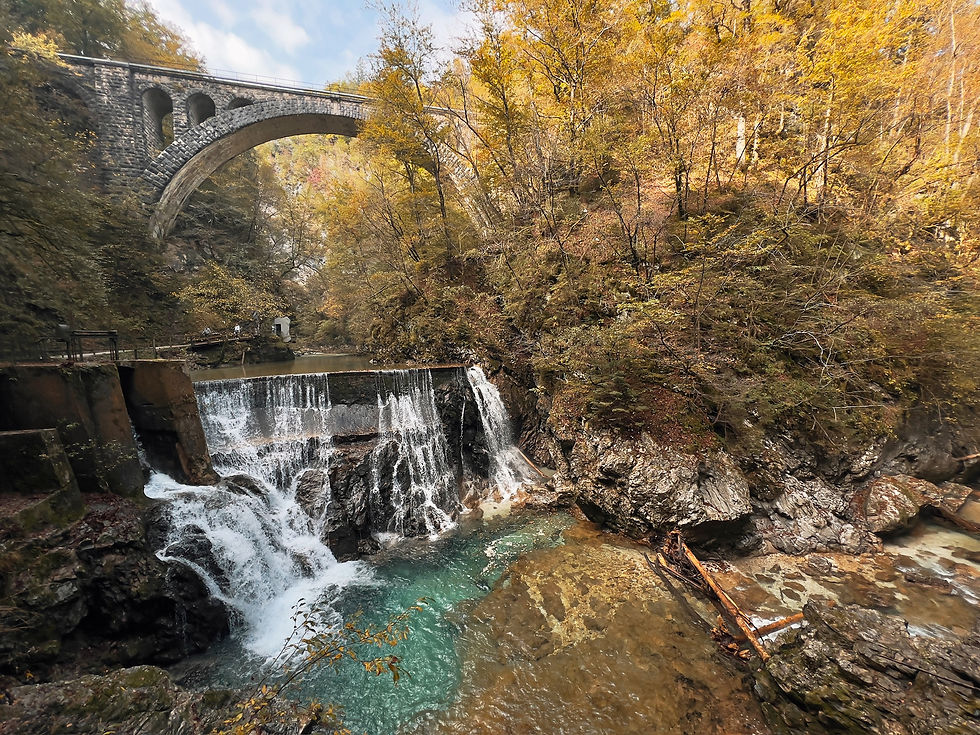
Vintgar Gorge is a gorge-ous (I’m so sorry, I had to do it) one-way hike, in which you walk one-way for about two hours on boardwalks through the middle of the River Radovna… one-way. Have you noticed that I keep saying “one-way?” Well that’s because T and I are complete dummies and didn’t realize that the hike wasn’t in-and-out. We decided to drink in the views sans phones for the full hike, assuming we’d be able to snap some pics on the way back. Lo and behold, the hike spits you out at the other end and there’s no reentry. Oops.
Anyway, trust us, it was beautiful. Take pictures on the way.
This is a very popular sight in summertime, so book tickets online ahead of time here as it can sell out. It costs €15 for adults and €5 for kids over 3. The website also has a cute kid’s audio scavenger hunt thingy. It’s not stroller-friendly, so babywear if needed.
Getting to Vintgar Gorge from Bled:
Walking: Once again, we decided to go for a long stroll – about an hour each way. It was lovely countryside and we really enjoyed the walk, though it made for a long day since you had to retrace your steps from the far side of the gorge.
Driving: Super easy 10-minute drive from Bled.
Rent a Bike: You can rent bikes at the Tourist Information Center (TIC) in town for lovely cycle to the gorge.
Shuttle Bus: You can book an easy shuttle at the Tourist Information Center (TIC) in town or at Mamut travel center. The nice thing about the shuttle is that it retrieves you closer to the gorge hike exit, so you don’t have to walk all the way back.
At the End of the Gorge Hike:
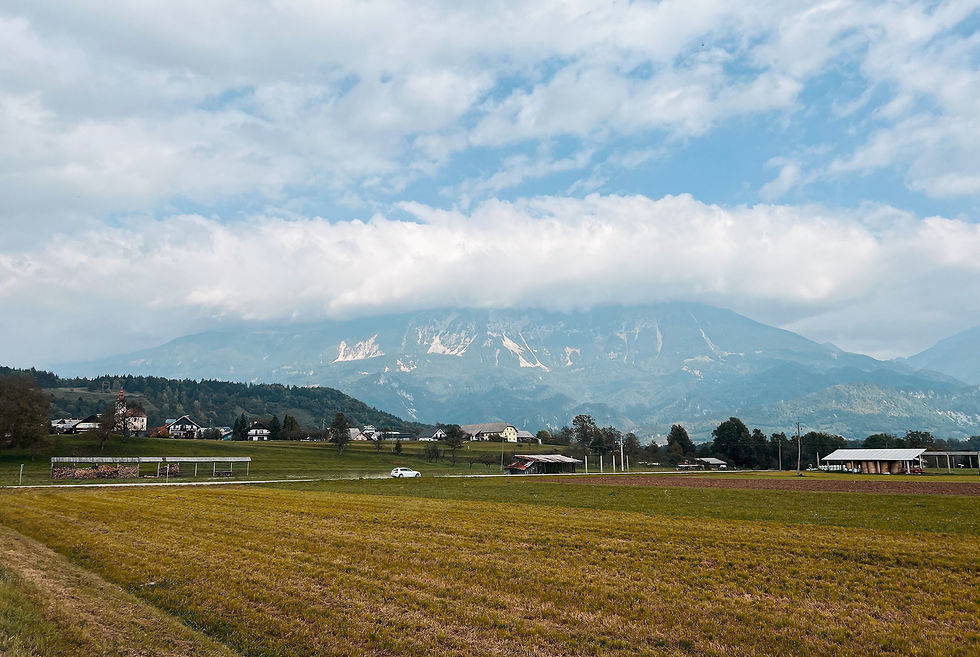
You’ll either follow the Green Trail or the Red Trail. Green takes you up to the Church of Sveta Katarina (Saint Catherine), a strenuous 25 minutes uphill and then about 30 minutes back down to the gorge entrance. Red is a faster but steeper walk, taking about 45 mins. Head left toward the cemetery in Blejska Dobrava, then back to the gorge entrance.
In keeping with the relaxed pace of Lake Bled life, you can head back into town, hang by the lake, or grab a nap and an evening glass of wine… But, if you’re particularly into bees, you might want to visit the quaint, quite small town of Radovljica, about 15 minutes away from Bled. The Apicultural Museum will tell you everything you’ve ever wanted to know about Slovenia’s long tradition of beekeeping.
Lake Bohinj
If you need a little more alpine lake-age in your life, or you’d like to really get away from the crowds and relax for a day or two, consider an additional trip to Lake Bohinj. I’m not naming any names, but some people think it’s a bit boring… while others find it the perfect relaxing getaway. It’s set in the middle of the mountains inside Triglav National Park, and is very calm and feels more nature-y than Bled. You can swim, hike, rent a canoe, or just relax by the water. Getting there from Bled is about a 35-minute drive or bus ride. If you decide to go, check out the Vogel Mountain cable car, from which you can get a glorious view of the surrounding Alps. And if you’re up for a more strenuous hike, the Savica Waterfall is a hidden gem.
Also, the word for waterfall in Slovenian is “slap.” That really made me laugh. I am giggling right now.
Day 5: Optional Road Trip in the Julian Alps
If you’re loving the relaxed pace of Lake Bled or want to check out Lake Bohinj, feel free to save this stop for your next trip to Slovenia. Otherwise, you can set out from Lake Bled for a beautiful drive through the Julian Alps. You’ll want either a rental car or a full-day taxi driver for this excursion!
The Julian Alps are the height of Slovenia’s natural beauty. Centered around Triglav National Park, the region is a paradise for hikers, road-trippers, and anyone chasing some high-altitude peace and quiet. Note that summer and early fall offer the best weather for hiking and driving mountain roads (Vršič Pass is often closed due to snow in winter), so check the weather conditions through Bled’s Tourist Information Center before you head out.
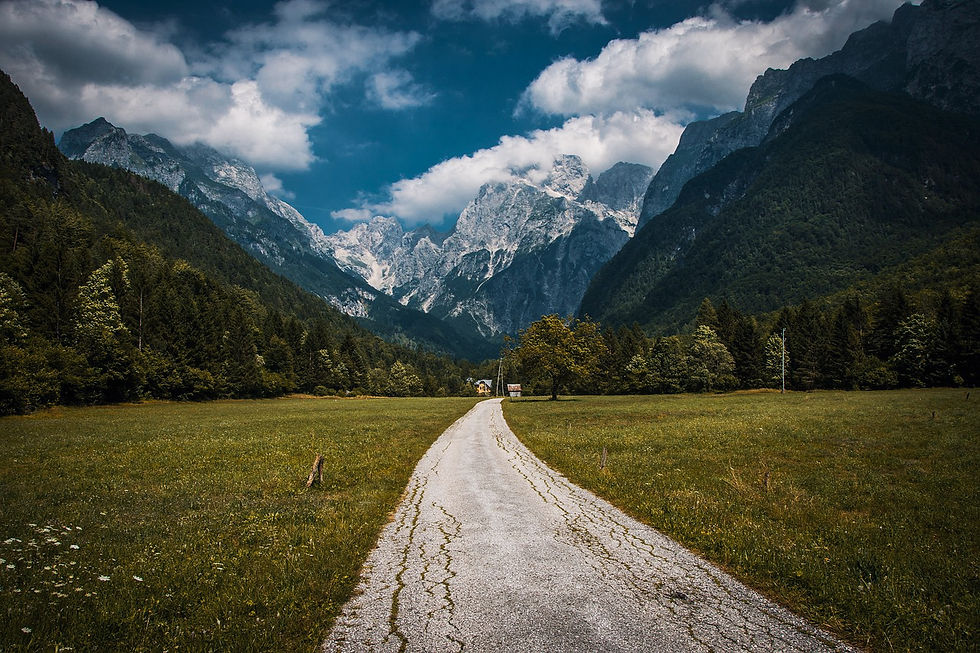
For this road trip, you’ll be driving along the Vršič Pass: the highest mountain road in Slovenia and one of Europe’s most scenic drives, with 50 hairpin turns winding up and over the mountains. Along the way, you can stop to stretch your legs at lookouts, visit the Russian Chapel, or hike several short trails into the surrounding peaks. On the other side of the pass lies the Soča Valley, home to the Soča River, which is famous for its turquoise color and crystal-clear rapids. If you’re in an adventuring mood, it’s the place to go for whitewater rafting, canyoning, or fly fishing, but it’s also just a lovely place for a picnic by the riverbank. Don’t miss Peričnik Waterfall, where you can walk behind the cascading water, or a stop at one of the mountain huts (planinske koče) for a hearty bowl of stew and a cold local beer.
The drive takes about 5 hours (covering about 100 km), so if you have extra time, consider spending a night along the way.
Vršič Pass Scenic Drive Details
1. Drive from Lake Bled to Kranjska Gora (45 min)
Take the road toward Jesenice (via the A2 highway or local road 209).
Exit toward Kranjska Gora, a charming alpine town and your last big stop before climbing the pass.
Option: Stop in Zelenci Nature Reserve just outside of town—it’s a quick walk to a small spring with vivid turquoise water.
2. From Kranjska Gora, begin your ascent of the Vršič Pass (1 hour with stops)
Follow signs for Vršič Pass / Trenta / Bovec.
You’ll climb through 50 numbered hairpin turns (24 up, 26 down on the south side).
Key Stops:
Russian Chapel (Kapelica Ruski križ): Built by WWI prisoners of war who helped build the road.
Viewpoints: You’ll find several pullouts with panoramic views of Mount Prisojnik and the Julian Alps.
Top of the pass (1,611 m / 5,285 ft): There’s a small parking area, a hut where you can grab tea or soup, and short trails with incredible vistas.
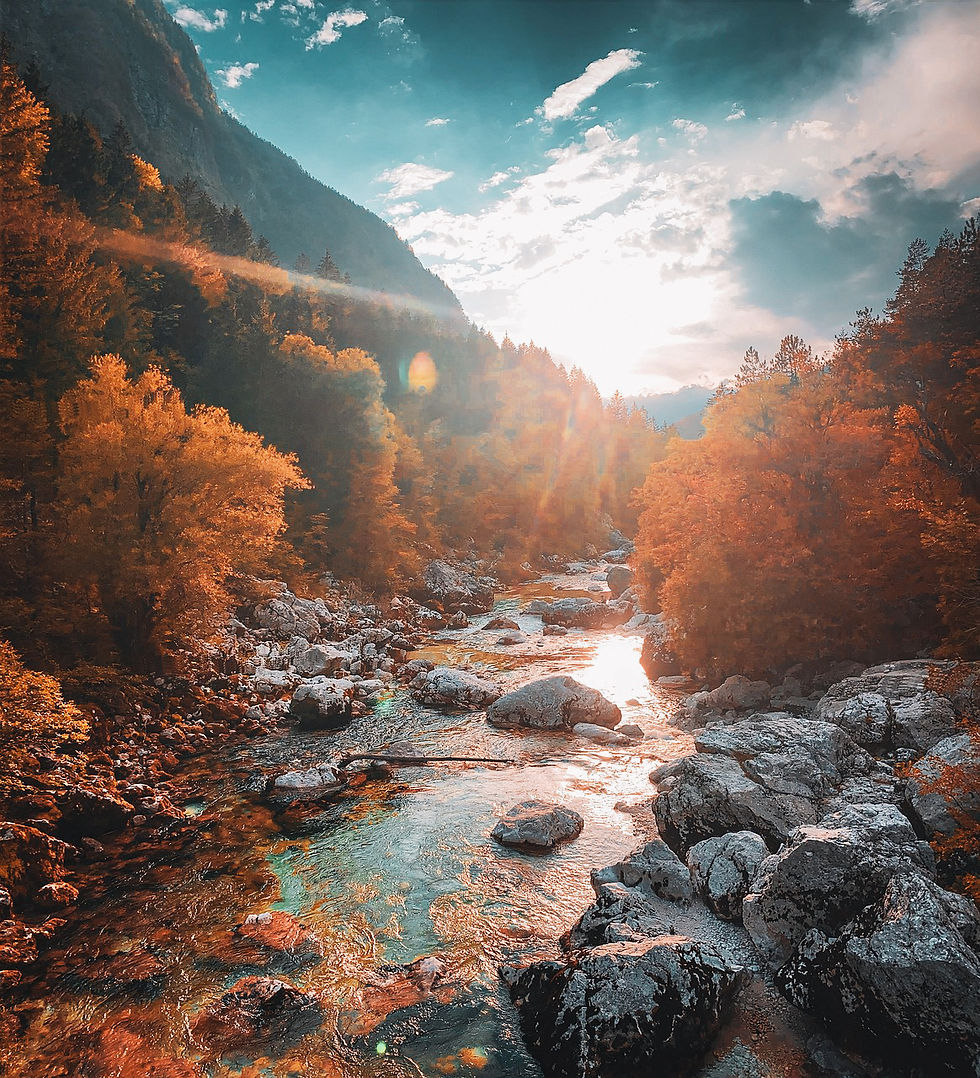
3. Descend into the Soča Valley (45 min)
The road down is just as curvy but more wooded and lush.
At the bottom, you’ll reach the village of Trenta, then follow the road along the stunning Soča River toward Bovec.
Additional Options:
Soča Valley: Spend time in Bovec (whitewater rafting, ziplining, or riverside relaxing).
Great Soča Gorge: Short detour for a walk along crystal-clear canyon pools.
Kobarid: There's an excellent WWI museum here.
If you head back to Lake Bled, grab a drink by the lake for one last evening then enjoy dinner at one of the traditional Slovenian (or pizza/burger joints) in town. Get some rest because tomorrow we're off on another adventure.
Day 6: Piran (1 Night)
On Day 6, we’re heading to Slovenia’s Adriatic Coast. It’s a wee 47 kilometers (compared to Croatia’s 1777 kms), but it’s quite charming! Perfect way to round out your week in Slovenia.
WS&T Travel Tip: If you’re loving Ljubljana or decide that a relaxed overnight in Piran isn’t necessary for you, you can always spend the night in the city and do Piran as a day trip.
We have a bit of a transit day here on day 6, though if you have your own car this will be a breezy drive from Lake Bled to Piran (under 2 hours). Make sure you park your car quickly, though, because Piran is not built for cars. You’ll find a big parking garage just outside of town, where you’ll pay per hour or per day – ask your hotel if they validate. Exit from floor 1 of the garage, and just 50 yards away at the locals’ waterfront parking spot (Fornače), you’ll find a free shuttle into town. Otherwise, it’s a 15-minute walk.
If you’re taking the bus, you’ll have to bus back from Bled to Ljubljana then jump on another bus to Piran. It’ll take a bit of time especially if you have to wait between buses, but they all run frequently and the bus stations are right in (each) town. You can grab some lunch in Ljubljana if you have a long wait.

Once you arrive in Piran, you’ll likely find yourself in or near Tartini Square, the central spot in this small town. Try Art Hotel Tartini or PachaMama Pleasant Stay – both good options at either end of the price spectrum for your overnight.
After checking into your hotel and depositing your luggage, it’s time for the short but sweet tour of Piran. Start at Tartini Square, where you’ll spot a sculpture of Mr. Giuseppe Tartini – a famous violinist for whom the square is named. You’ll spot Piran’s Town Hall, marked with the winged lion of St. Mark – symbol of the once incredibly powerful Republic of Venice. Check out the cute shop on the ground level of the Venetian House, the oldest preserved house on Tartini Square.
Next, you’ll want to check out St. George’s Cathedral and its big ol’ bell tower, which is worth a climb if you’re up for it and the weather is good. The large port city just across the water is Trieste, Italy.
If you’d like to keep exploring, you can head down a series of twisty alleys and streets to the waterfront embankment, along which you can head towards Piran’s lighthouse. Otherwise, grab a delicious gelato at Mersii, then head back to Tartini for some people watching and a well-deserved libation.
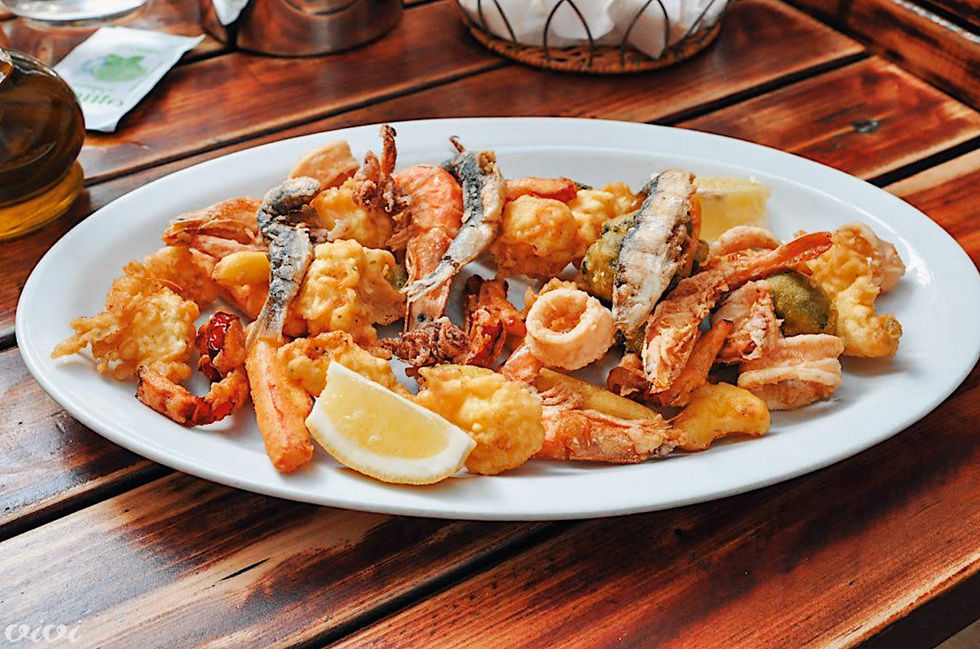
Before dinner, wash off the travel day at one of several swimming options: the free, public pool right in front of the Hotel Piran (think concrete, not sand – but it’s still quite pleasant). If you have a car, pop over to Portorož, which has a nice boardwalk and sandy beach you can enjoy.
Tonight, enjoy a leisurely dinner at Restaurant Neptun (a bit of a seafood splurge!) or Pri Mari. As with every tourist spot in this part of the world, you may want ot book ahead if you’re coming in peak summer tourist season.
Day 7: Return to Ljubljana
Your time in Slovenia is coming to an end! We were seriously sad to leave this charming country and we can’t wait to come back for more.
Today, make your way back to Ljubljana either in your rental car or retracing your steps by bus. Head back to the beginning of this itinerary to find anything you may have missed in Ljubljana; now’s your chance to find a few more of Ljubljana’s hidden gems (of which there are many!). We hope you’ve enjoyed your time here as much as we did!
Slovenia with Kids
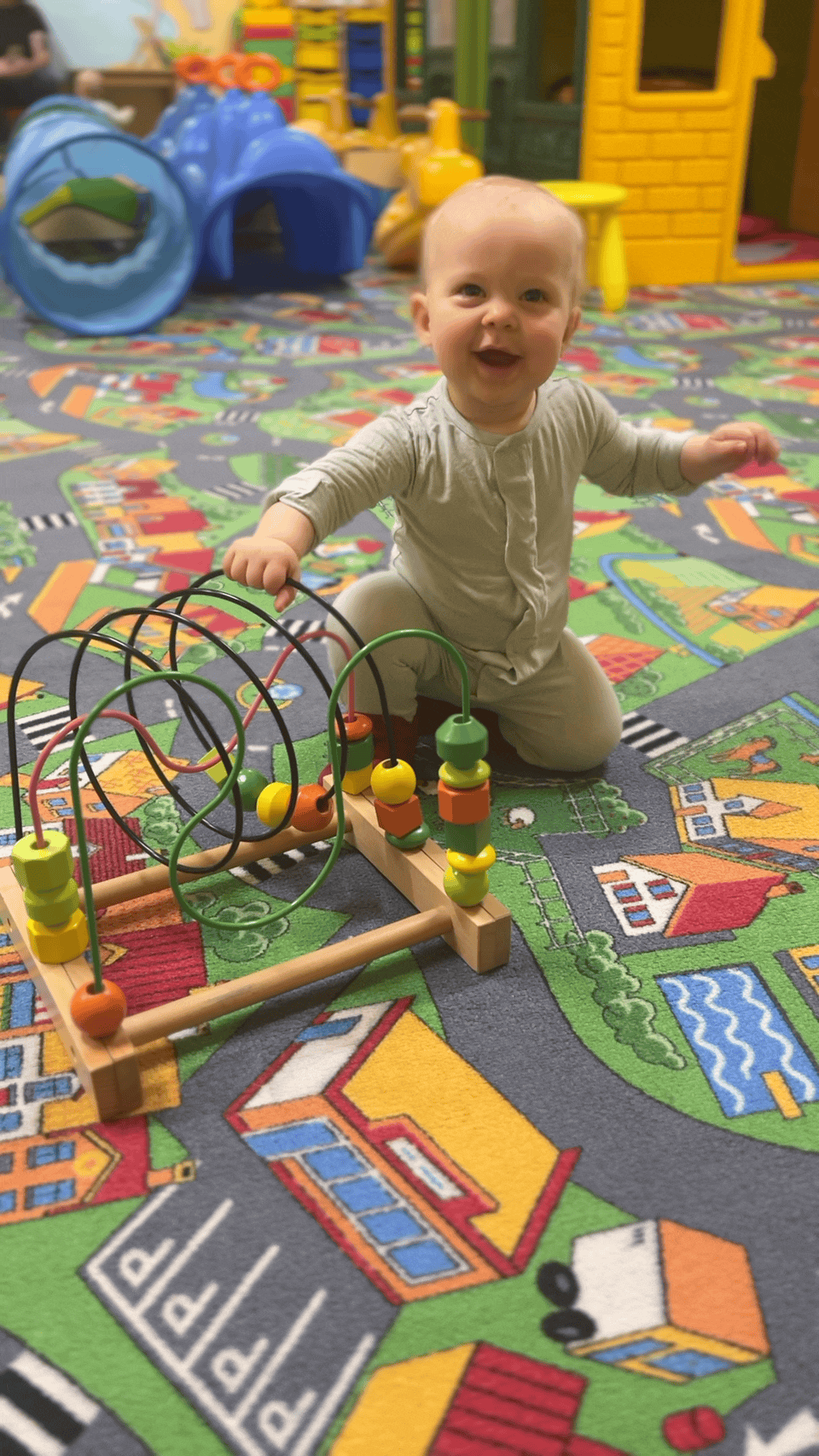
Slovenia hits the sweet spot for family travel: it’s safe, easy to get around, full of natural beauty, and packed with fun stuff for kids.
In Ljubljana, check out the interactive Minicity, where kids can role-play different grown-up jobs, or the small but charming Ljubljana Zoo. The Ljubljana Castle has a kiddo scavenger hunt that ends with a little prize from “Friderik the Castle Rat.” Love me a castle rat…
If you need to burn off some big kid energy, Atlantis Water Park has fun slides and splash zones, and WOOP! has trampolines, go-karts, bowling, and more.
Near Lake Bled, there’s a Dino Park nearby with life-sized replicas. And for something totally different, check out the Pohorje Treetop Walk near Maribor, where a wide wooden path winds through the forest canopy, ending with a giantslide.
Touring Slovenian Wine Regions
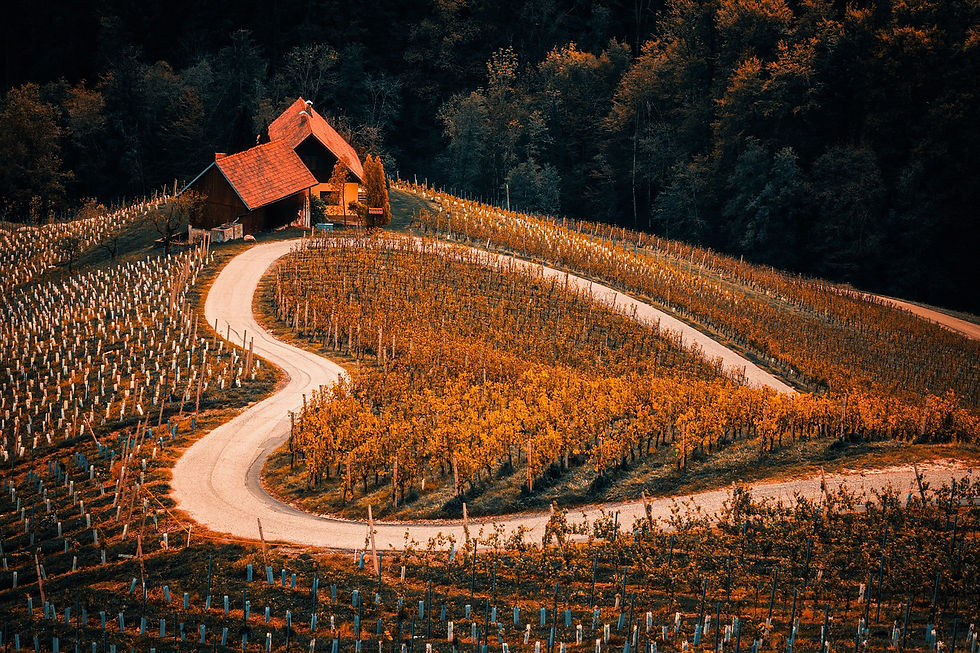
One of my favorite topics! Slovenian wine is a hidden gem in the world of viticulture. With 2500 years of winemaking history and an array of microclimates, Slovenia punches well above its weight wine-wise (say that 10 times fast).
Slovenia has three distinct wine regions:
Primorska (Coastal Region) lies along the Italian border and enjoys a Mediterranean climate, making it ideal for bold reds and crisp, mineral-driven whites. It’s known for varietals like Rebula (Ribolla Gialla), Malvazija (Malvasia), and rich Merlots and Cabernets. The Vipava Valley is especially notable for its experimental orange wines (I love an orange wine!) and native grapes like Zelen and Pinela.
Podravje (Drava Region) in eastern Slovenia is the country’s largest wine region, specializing in elegant, aromatic white wines such as Šipon (Furmint), Laški Rizling (Welschriesling), and Sauvignon Blanc. This region is also known for its excellent late-harvest and sweet wines, thanks to the cooler climate.
Posavje (Sava Region) is located in the hills and valleys of southeastern Slovenia and is known for producing accessible, everyday wines. It’s home to Cviček, a unique low-alcohol and slightly sour red blend. The region also produces dry whites and sparkling wines, and many vineyards here continue to follow traditional winemaking methods.
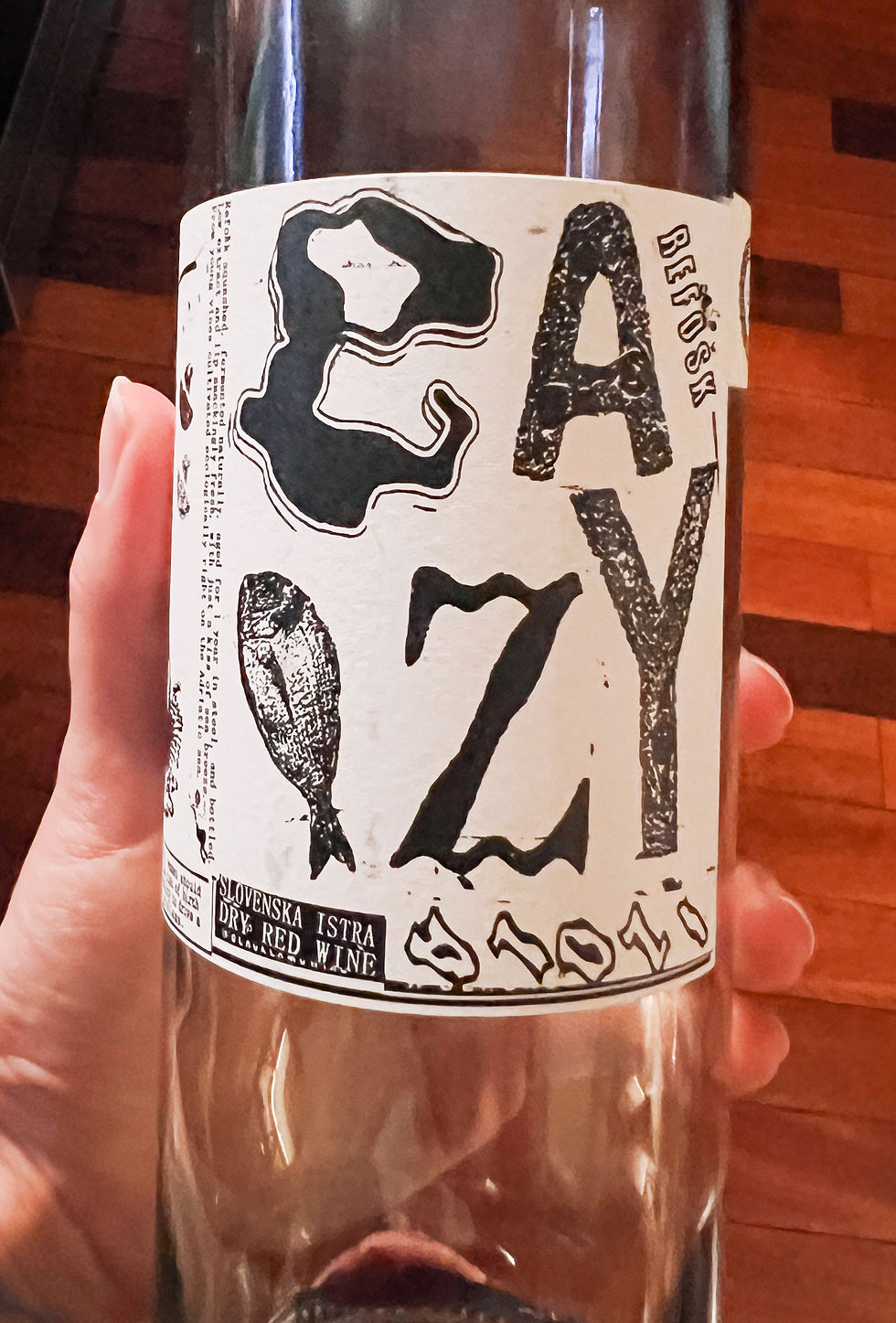
If you’re thinking about exploring Slovenia through its wines, you’re in for a treat. Most wineries are family-run, often tucked into beautiful hillsides where you’ll sip with the winemaker themselves. In the Primorska Coastal Region, Goriška Brda is often called “Slovenia’s Tuscany,” with rolling vineyards, terracotta rooftops, and spectacular views. It’s a great spot for elegant whites, orange wines, and reds like Merlot and Cabernet Franc.
Don’t miss Movia (a pioneer of natural and orange wines), Klet Brda (the largest co-op with a lovely tasting terrace), or bold winemaker Edi Simčič. Just south of there, the Vipava Valley is quieter and more rugged, home to indigenous grape varieties like Zelen and Pinela. Burja Estate, Tilia Estate, and Lepa Vida are known for thoughtful, organic wines. If you head northeast, Jeruzalem and the Štajerska region offer gentle green hills and cool-climate whites like Riesling and Sauvignon Blanc, plus sparkling and sweet wines. Stop by Puklavec Family Wines or Kogl Winery and be sure to see the famous heart-shaped vineyard road near Špičnik.
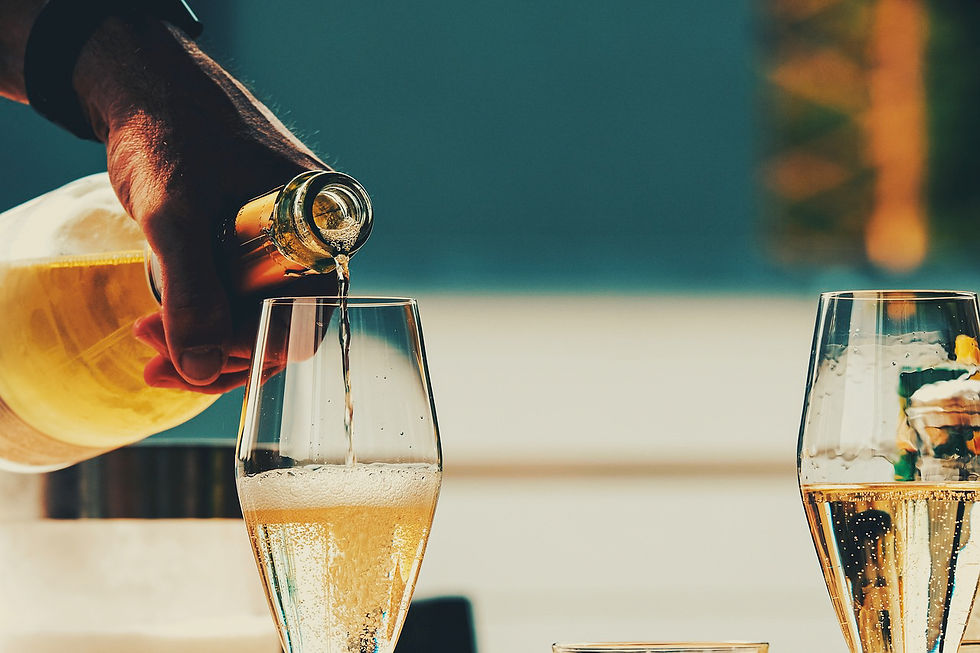
Many wineries are by appointment only, so it’s a good idea to book tastings in advance. To relax and really enjoy the wine, consider staying overnight at a vineyard guesthouse—like Kmetija Štoka or Kmetija Stekar—or join a guided tour from Ljubljana or Maribor. Companies like Slovenia Wine Tours or Winestronaut offer full-day excursions with tastings and local snacks (yay!). Tastings usually cost around €10–20 and often include bites of cheese, bread, or cured meats. And wherever you go, you’ll get to try something distinctly Slovenian: Rebula in Brda, Cviček in the southeast, or a funky skin-contact white aged in clay amphorae.
Oh my gosh, take me back!
Our Essential Guide to Slovenia will answer lots of questions about the country in general, so make sure to check it out before or during your trip. If you’re continuing on in Europe, here are our guides to Prague and Kraków – both favorites of ours and super kid-friendly!
Traveling with a Tiny Trekker? Click below to check out some curated picks for making life easier when traveling with (and without) small children.
Visit GEAR UP For More Outstanding Travel Essentials
Copyright © WS&T. All rights reserved.













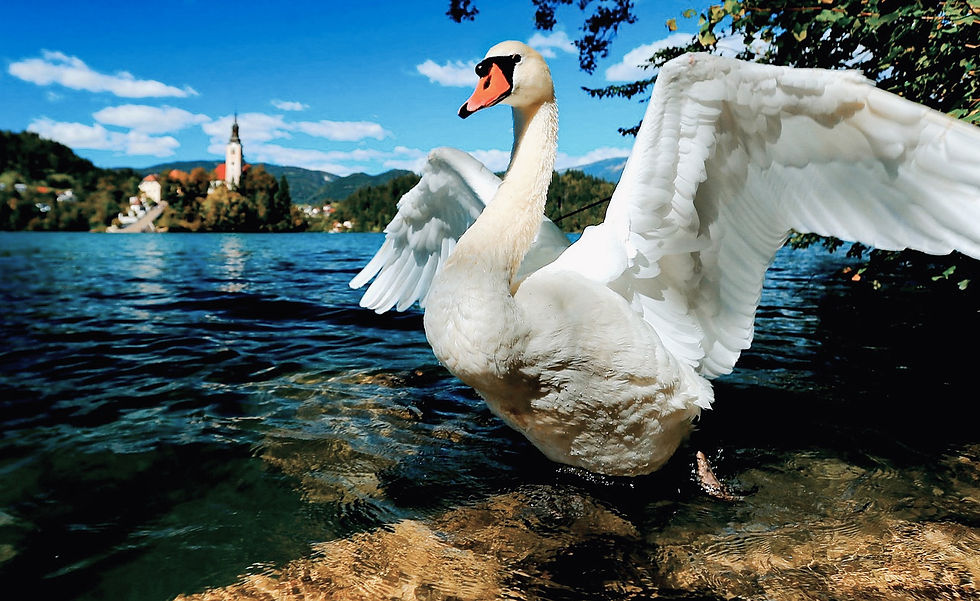


Comments